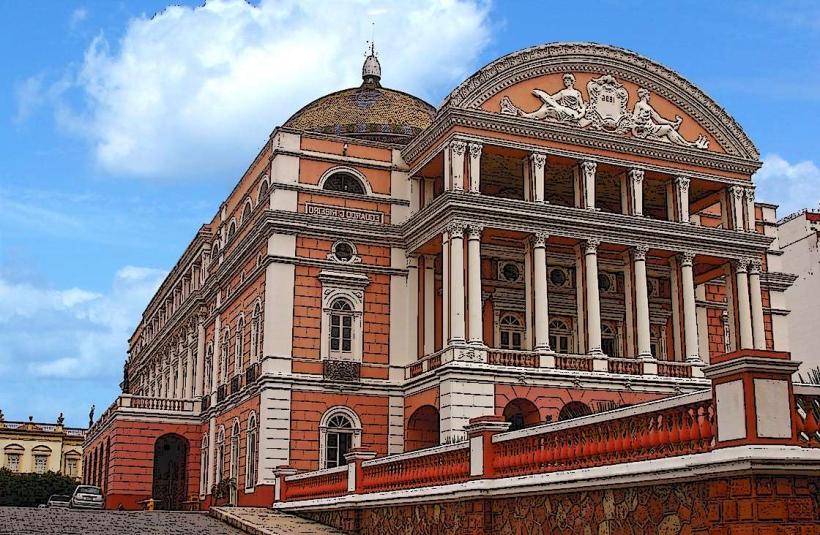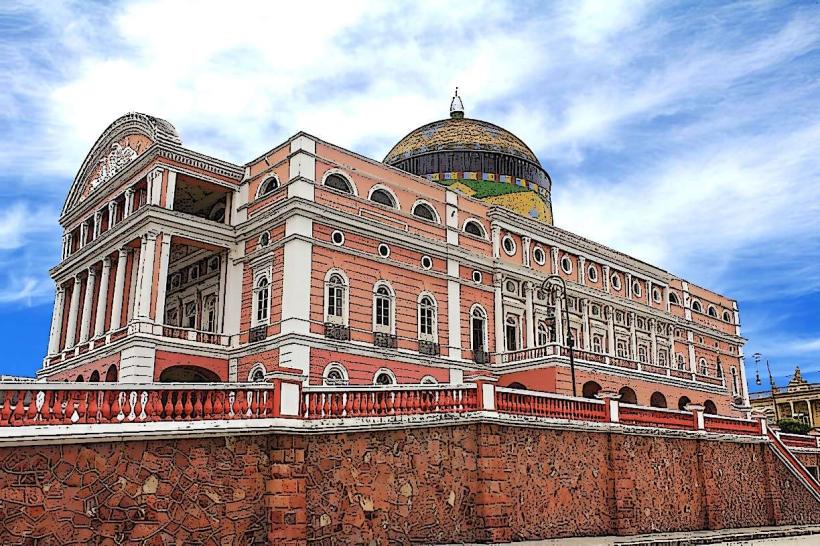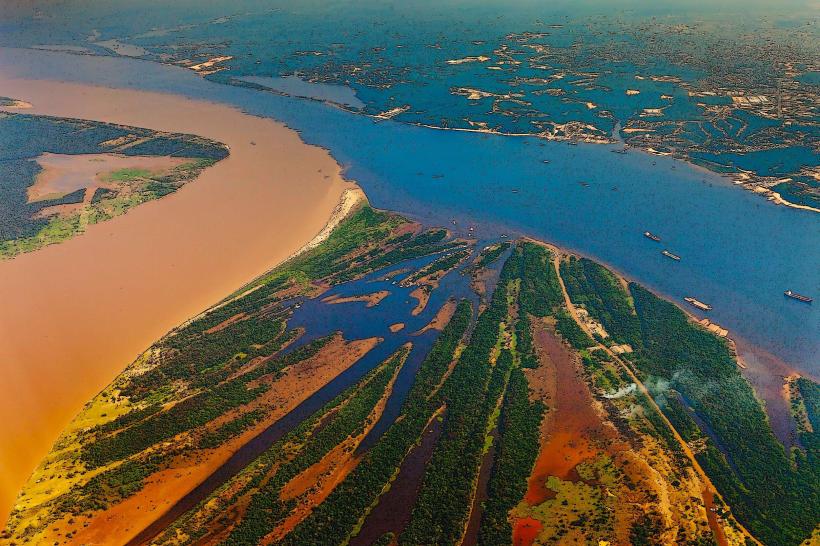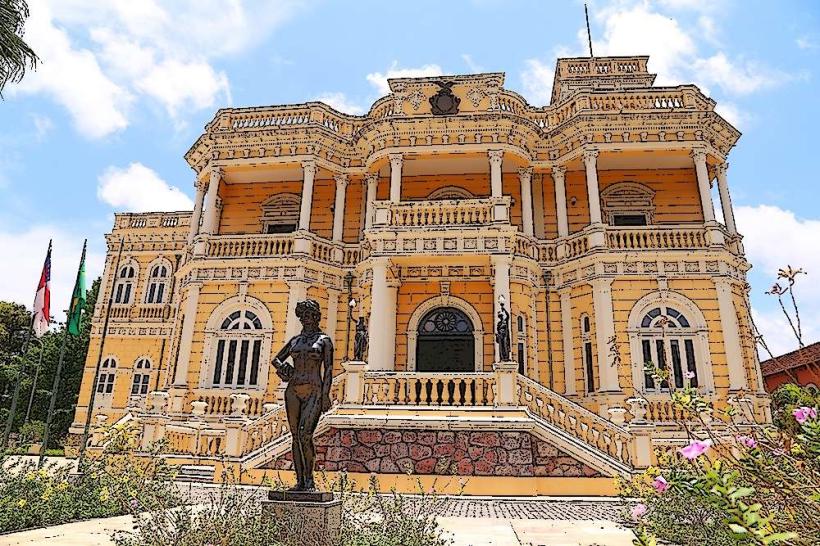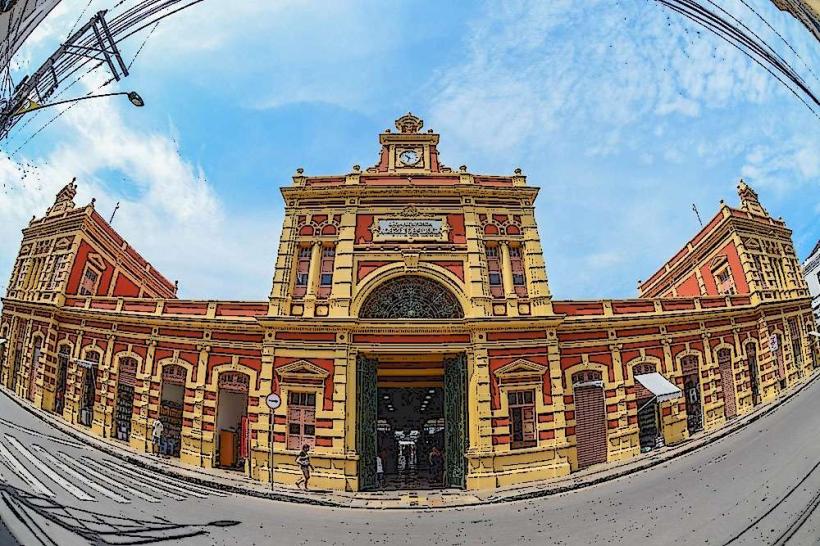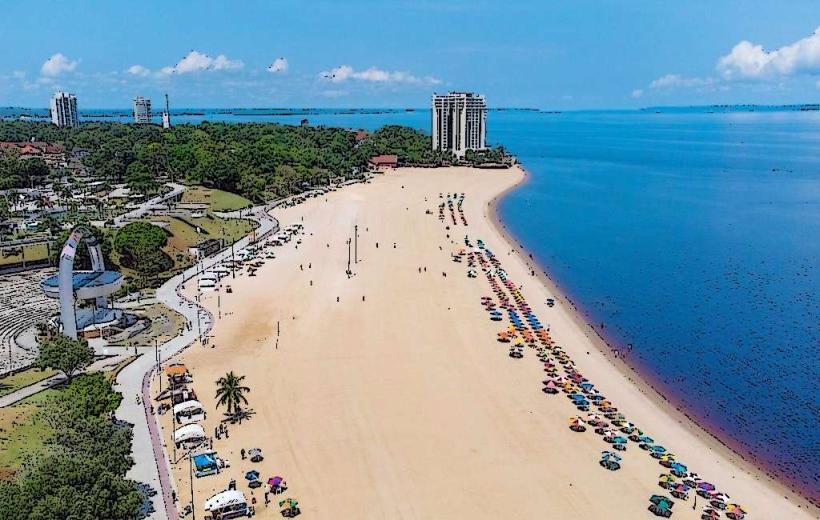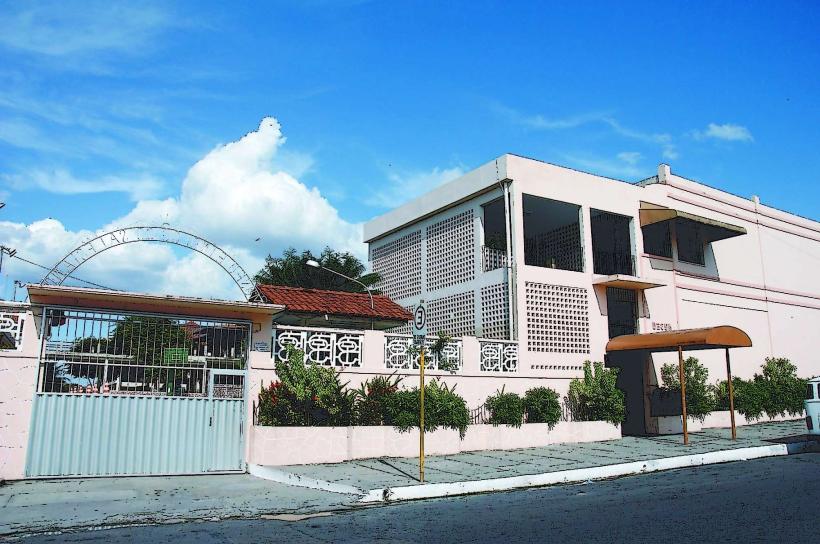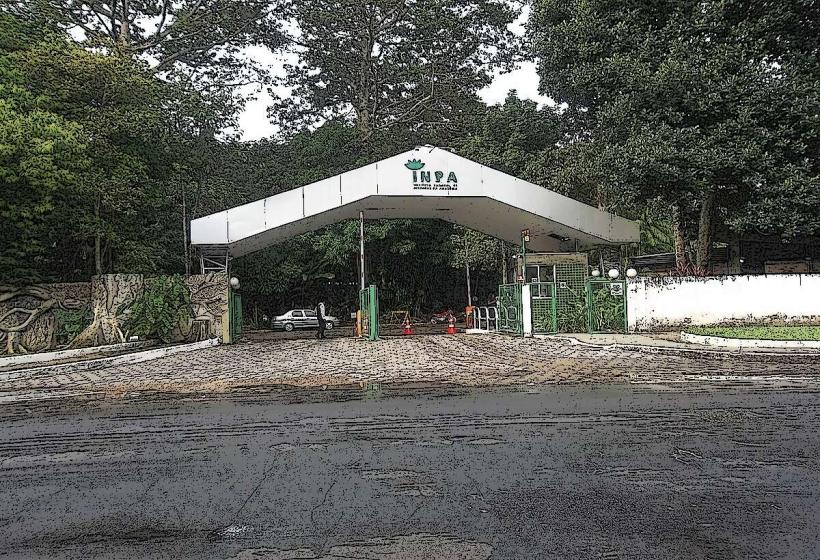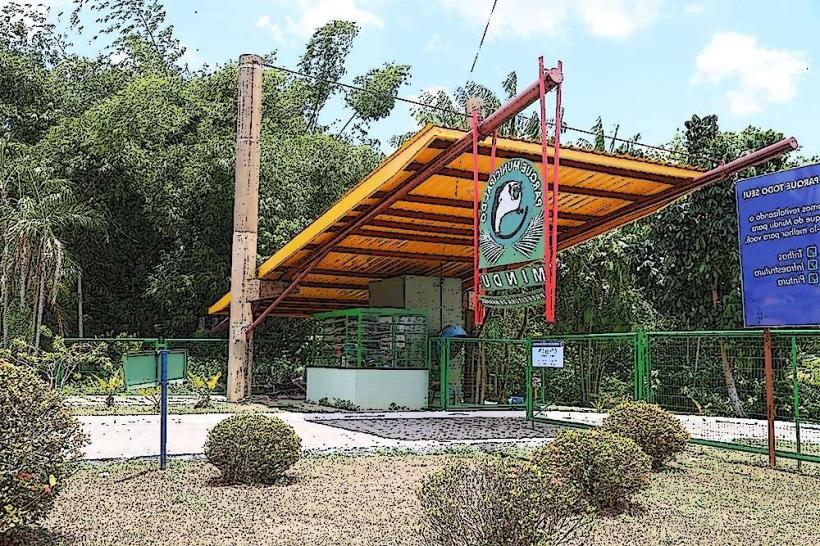Information
City: ManausCountry: Brazil
Continent: South America
Manaus, Brazil, South America
Overview
Manaus, the capital of Amazonas in northern Brazil, sits on the edge of the Amazon Rainforest, its streets echoing with bird calls and the scent of rain-soaked earth.Manaus, one of Brazil’s most distinctive cities, weaves modern streets and glass towers into the green edge of the Amazon.Here’s a closer look at Manaus beyond its famous sights: home to about 2.2 million people, this bustling hub ranks as the largest city in the Amazon and the ninth most populous in Brazil, where riverboats crowd the docks and humid air hangs heavy year-round.In recent decades, the city has grown quickly, fueled by its position as the Amazon’s economic heart and its spot where the dark Rio Negro meets the sandy-brown Rio Solimões to form the mighty Amazon River.Manaus is home to a rich mix of people-indigenous families, descendants of Portuguese settlers, Afro-Brazilian communities, and newcomers from every corner of Brazil, from the coast to the deep interior.The city’s home to many immigrants from nearby countries, especially Colombia and Venezuela, where the scent of street-side arepas drifts through the markets.Migration: Drawn by jobs and bustling trade, people from every corner of Brazil have flocked to Manaus, a city often seen as the gateway to the Amazon, where riverboats wait to carry travelers deep into the rainforest.Manaus holds a key place in Brazil’s economy, thanks to its spot on the edge of the Amazon, where riverboats and factories keep trade moving.The economy runs on a blend of industry, services, and trade, from factory floors humming with machinery to busy storefronts on crowded streets.The Free Trade Zone, or Zona Franca de Manaus, has driven the city’s economy since 1967, giving companies a break on taxes and import duties so they can produce and trade goods more cheaply-think electronics rolling off factory lines under the humid Amazon air.As a result, Manaus has grown into a busy hub where factories turn out electronics, motorcycles, and even rows of shiny new appliances.Big names like Honda, Samsung, and Sony run manufacturing plants here, where the hum of machinery fills the air.In Manaus, factories hum with activity, turning out medicines, chemicals, and packaged foods.Several major pharmaceutical companies run plants here, and the city also turns out plenty of food-from tins of salty sardines to bottles of sweet, tropical fruit juice.Tourism is on the rise here, thanks to its closeness to the vast Amazon Rainforest, where the air smells of wet earth and orchids.Visitors flock here for eco-adventures-spotting scarlet macaws in flight, drifting along quiet rivers, and stepping into the vibrant world of Amazonian cultures and untouched forests.Manaus sits deep in the Amazon, far from Brazil’s other big cities, yet you can still reach it by riverboat, plane, or the long highway cutting through the forest.Air travel in Manaus centers on Eduardo Gomes International Airport, the city’s main gateway, with daily flights across Brazil and occasional routes to Colombia, Venezuela, and Peru.Perched on the banks of the Amazon, Manaus runs a river transport network that links the city to scattered communities along the basin, where wooden boats glide past dense jungle.Passenger and cargo ships crisscross the region, and at the heart of it all, the Porto de Manaus bustles as a key hub for river trade, with crates stacked high along the docks.Roads: Manaus links to the rest of Brazil by road, but getting there can be a slow, difficult trek through thick jungle and winding routes with no straight highways.The BR-319 is the only main road out of Manaus, stretching toward the rest of Brazil, but after a week of heavy rain its cracked asphalt can vanish under red, muddy water.Fueled by economic growth, Manaus has seen its neighborhoods expand quickly, with new apartment towers rising where empty lots once stood.City Center: In downtown Manaus, glass-front shops sit beside apartment blocks and the pale stone of government offices.It’s the city’s most developed and priciest area, yet some streets still hold small, plain houses with peeling paint.On the edge of Manaus, the suburbs are spreading fast, with new neighborhoods popping up and offering homes that cost far less than those in the city center.Zona Norte and Zona Leste have grown fast, with new buildings and shops popping up, but the roads and utilities haven’t kept pace.In Manaus, as in many big Brazilian cities, sprawling favelas-clusters of homes stacked close together-struggle with poverty, crumbling infrastructure, and scarce basic services.Culture and Arts Manaus serves as a vibrant hub for the Amazon, where the beat of indigenous drums meets the elegance of European colonial design.The city thrives at the meeting point of the Amazon’s lush green canopy and Brazil’s bustling urban heart, a crossroads that shapes and deepens its culture.In Manaus, the pulse of the Amazon’s indigenous cultures is still strong-you can hear it in the drumbeat of a street festival or see it in the bright beadwork at the market.The city is home to many Indigenous groups, and their traditions-art painted in bold colors, music that carries through the streets, and deep spiritual practices-shape the heart of local culture.Theatre and music thrive in Manaus, where songs often echo the rhythms of the Amazon, from the soft beat of hand drums to the hum of riverboats.Local festivals, like the colorful Festival de Parintins, come alive with the rhythms of bumbá-meu-boi-a lively mix of folk music and dance.In the heart of the city, the Teatro Amazonas draws crowds with its soaring arias, grand operas, and lively theater performances.Beyond its indigenous traditions, Manaus bursts to life with celebrations like Carnaval and the Festa de São Sebastião, when parades wind through the streets and music spills into the warm night air to honor the city’s patron saint.In Manaus, universities and other schools thrive, filling lecture halls and leafy campuses, and their work shapes the Amazon region’s intellectual and cultural heartbeat.The Federal University of Amazonas, or UFAM, is the leading school in Manaus, offering everything from engineering degrees to advanced research programs.It’s known for groundbreaking research in environmental science, biology, and the social sciences, especially studies tied to the Amazon’s dense rainforests.In Manaus, you’ll find several private universities, including Universidade Nilton Lins and Faculdade de Estudos da Amazônia (FEAM), where students study subjects like law, business, and engineering.Education Quality: Even with universities in the city, primary and secondary schools vary widely in quality-especially in poorer neighborhoods, where a classroom might share a single worn-out textbook and dropout rates run high.In Manaus, healthcare comes through a mix of public clinics and private hospitals, yet it’s often hard to access-especially with the city growing fast and sitting deep in the Amazon.Public healthcare in Brazil is run by the Sistema Único de Saúde (SUS), offering residents free medical care-from a routine checkup to an emergency room visit.Still, you might wait weeks for non-urgent care, and the quality isn’t always the same.Private healthcare in Manaus tends to offer better quality, with modern hospitals and bright, clean clinics delivering excellent care.
Landmarks in manaus

